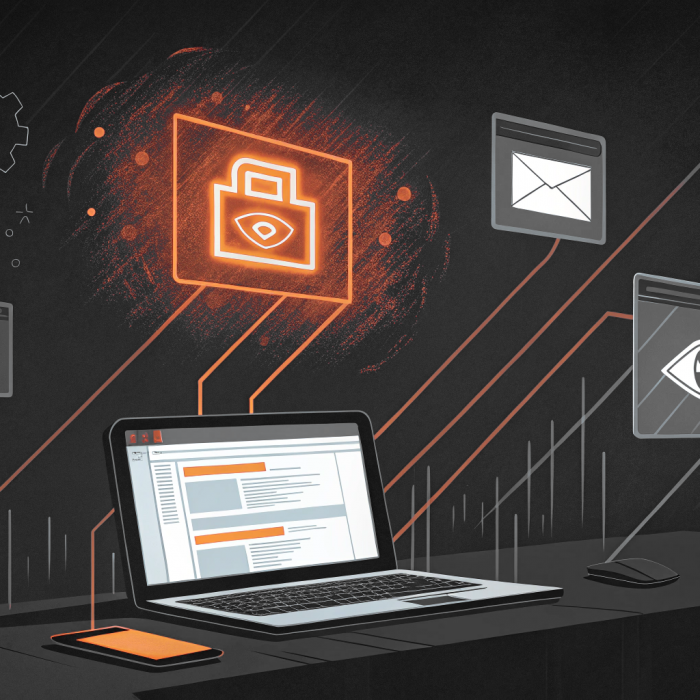If there’s one industry where acronyms are rife, it’s the world of cybersecurity. IAM, BYOD, CISA, CVE, NIST, AV, PIM, APT – the list goes on. One such acronym that’s cropping up more and more often is ‘PAM’. To the layperson, ‘Pam’ usually refers to a female. The name of your boss perhaps, or a great Aunt on your father’s side. However, in the rapidly changing landscape of cybersecurity, where data breaches and evolving threats keep organizations on high alert, those three innocent letters stand for ‘Privileged Access Management’.
In this blog, we’ll break it down to answer the basics of PAM: what is it? How does it work? Why is it necessary? As well as exploring the features it offers so we can emphasize its invaluable benefits to enterprises. We will explain how privileged access management work involves a combination of people, processes, and technology to identify and manage privileged accounts effectively.
What is Privileged Access Management (PAM)?

Privileged Access Management (PAM) is a critical security mechanism that safeguards identities with special access or capabilities beyond regular users. It is a combination of people, processes, and technology that enables organizations to manage and secure access to their most critical systems, applications, and data. PAM is essential for implementing Zero Trust and defense-in-depth strategies, protecting valuable assets, and reducing the risk of data breaches. By ensuring secure access to privileged accounts, PAM helps organizations maintain robust security postures and protect their most important bit: the wider network, sensitive data, essential processes and services, etc.
Understanding Privileged Access Management
Background: Privileged vs. Standard Users
In the context of cybersecurity, privileged users wield administrative might, holding the master key to critical systems. These individuals have the authority to configure systems, install software, alter user accounts, and access secure data. They’re essentially the architects of the digital realm. On the other side of the spectrum, standard users don’t have free reign; they navigate this same landscape with limited access. The standard user interacts with systems, applications, and data within the boundaries set by their privileged counterparts.
The Need:
Managing who can do what on your computer is vital, but orchestrating this manually simply takes too much time, especially for larger enterprises. PAM is essential for identifying the individuals and processes that require privileged access and for implementing the necessary policies to achieve this, while protecting sensitive data.
The Solution:
This is where Privileged Access Management comes in; it makes sure only the most trusted people in your organization have special access, allowing companies control and stop access easily when and as needed.
Managing Privileged Accounts
Managing privileged accounts is a crucial aspect of Privileged Access Management. Privileged accounts have elevated permissions and capabilities, allowing users to perform various administrative tasks. These accounts pose a significant risk to the technology environment if compromised, as they can be used to gain access to sensitive data and critical systems. Effective management of privileged accounts involves implementing the Principle of Least Privilege (POLP), logging privileged activity, and employing a Just-In-Time (JIT) privilege practice. By adhering to these practices, organizations can ensure that privileged account access is tightly controlled and monitored, reducing the risk of unauthorized access and potential security breaches.
Key Features of Privileged Accounts Management Software
A good PAM solution offers a scalable and secure method to authorize and monitor privileged accounts and activity throughout your system. By granting access precisely where authorized and swiftly revoking it when needed, PAM tools bring access management under a centralized, dynamic umbrella, strengthening overall cybersecurity resilience.
Here’s an overview of the key features available with a PAM solution:
- Access Control: Precise management of privileged access to vital systems and sensitive data with detailed control.
- Session Monitoring: Immediate monitoring and documentation of user actions throughout privileged sessions.
- Approval Workflows: Established procedures for requesting and authorizing privileged access.
- Audit Trails: Thorough records for compliance and in-depth forensic examination.
- Automated On-boarding/Off-boarding: Simple processes for adding and removing access.
- Just-In-Time (JIT) Privilege Elevation: Briefly boosting user permissions for particular tasks.
- Identity Management Integration: Smooth integration with Identity and Access Management (IAM) systems. Privileged identity management is a critical subset of PAM that specifically addresses the management of user accounts with elevated permissions.
- Policy Enforcement: Making sure everyone follows security rules and meets requirements.
- Real-time Alerts: Instant alerts for suspicious actions or violations of policies.
- Secure Remote Access: Enabling safe connections to remote endpoints, such as servers.
- Threat Intelligence Integration: Connecting with threat intelligence feeds to spot and prevent threats in advance.
Common Privilege Threat Vectors

Privileged accounts are a prime target for attackers, who use various methods to exploit them and gain unauthorized access to sensitive systems and data. Common privilege threat vectors include phishing, social engineering, password cracking, and exploiting vulnerabilities. Attackers may also use privileged accounts to move laterally within an organization, escalating their privileges and gaining access to more sensitive data. By understanding these threat vectors, organizations can implement the necessary security measures to protect privileged accounts and prevent unauthorized access to their critical systems and sensitive data.
The Significance and Benefits of Privileged Access Management: Why is it Necessary to Mitigate Security Risks?

Risk Reduction
PAM responds like a digital guardian, lowering the risk of unauthorized access to an organization’s most sensitive information by implementing strict access controls. Poorly managed privileges can lead to increased security risks, underscoring the necessity of effective management to mitigate these potential threats. Following the Principle of Least Privilege (POLP), PAM guarantees that only authorized individuals with specific roles can access crucial systems and data, thereby reducing the potential attack surface. Real-time monitoring and session recording capabilities further enhance security by promptly detecting and responding to any anomalous or suspicious activities. It’s the ultimate cybersecurity power tool, keeping data safe and sound within an organization.
Compliance Conditions
PAM doubles as a key element in ensuring compliance with regulatory mandates, offering comprehensive controls and monitoring capabilities which are often required in order for enterprises to be compliant. For example, in a financial institute, PAM would significantly aid regulatory compliance by thoroughly overseeing privileged access to sensitive customer data. PAM solutions can help organizations prove compliance by generating reports of privileged user activity, including who is accessing what data and why. By implementing a PAM solution, organizations can demonstrate their commitment to security and compliance, reducing the risk of fines and reputational damage. This not only helps in meeting audit and compliance requirements but also in building trust with customers and stakeholders. By aligning with industry conditions, PAM transforms into a reliable ally, empowering organizations to confidently navigate through compliance challenges, shield valuable data, and fortify a secure digital haven – killing several birds with one PAM!
Security Sabotage Safeguarding
PAM solutions provide crucial defense against security breaches and can effectively prevent malware infiltrations. Whether it’s from an external threat by “risk reduction” (as mentioned earlier) or an internal threat by imposing restricted privileges on individuals, processes, and applications – PAM proves its significance by preventing hacker/malware attacks and stopping their actions; they are essentially useless if they can’t carry out their malicious operations on the endpoint without the necessary privileges.
Benefits in a Nutshell

Businesses using a PAM solution benefit greatly in fortifying their security foundation – reducing risk, and minimizing both insider and external threats – but also in meeting strict compliance requirements and upholding industry regulations with precision. The swift and effective incident response capability of PAM is crucial, providing real-time monitoring and session recording to detect and address any anomalies as soon as they occur. Key features based on least privilege principles exemplify the strength of PAM software in safeguarding critical systems and sensitive data in the dynamic landscape of cybersecurity.
Privileged User Access Made Easy with Admin By Request

It may sound like a complicated to task to achieve all of the security benefits outlined above – and that’s a true statement for some PAM solutions.
But others combine comprehensive features with end user friendliness to make it a thing of simplicity. Introducing: a game-changer in the Privileged Access Management space. Offering granular control, real-time monitoring, and comprehensive audit trails, Admin By Request Endpoint Privilege Management (EPM) is a PAM tool that ensures the precise management of privileged access while upholding compliance with industry regulations.
Beyond the realm of traditional PAM capabilities, Admin By Request introduces innovative features: machine learning and AI-based auto-approval of trusted applications; malware protection checks through integration with OPSWAT MetaDefender Cloud API; secure remote access to servers; the ability to discover and map your entire network; and integration with existing systems. Admin By Request brings a blend of fundamental PAM functionalities and advanced enhancements which not only streamline processes but also enhance operational efficiency.
Conclusion
In summary, the acronym ‘PAM’ represents a security tool which solves a huge number of complicated security and compliance problems faced by enterprises.
If you’re looking to make the task even easier, choose Admin By Request EPM – the most efficient method to manage admin rights, enabling organizations to give and take back admin access with precision and ease.
Book a demo today, or download the Admin By Request Free Plan – a full feature, enterprise-level product for up to 25 endpoints.







